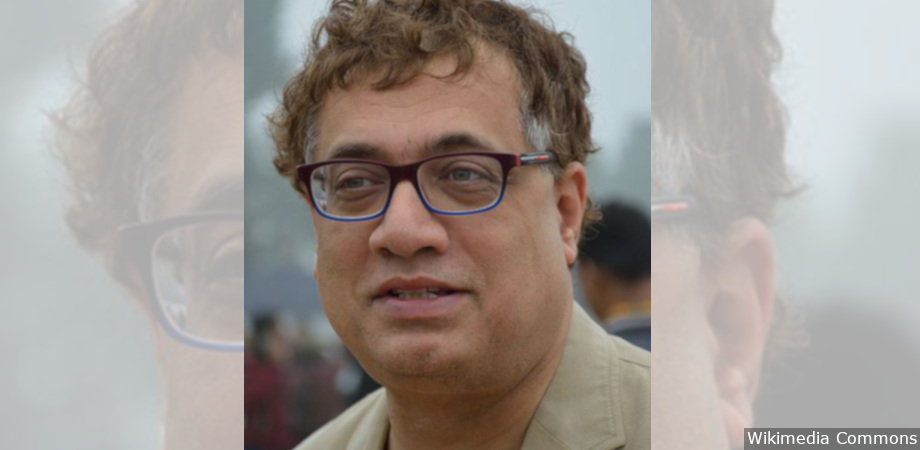Trinamool MP’s Comparison Of Centre Vs State Health Budgets Misleading

Mumbai: On November 3, 2019, Derek O'Brien, member of the Rajya Sabha (parliament’s upper house) from West Bengal’s All India Trinamool Congress, tweeted a graph to show that his state’s allocation to healthcare as a percentage of its total budget for 2019-20 was higher than that of the central government’s. This is misleading, as health is a state subject and allocation for public healthcare majorly rests with the states. Further, only five states allocated a lower percentage of their budgets to healthcare.
Thank you for suggesting I should compare like-with-like. So here it is. Spend on #healthcare The India Story versus The Bengal Story #1 pic.twitter.com/ht3qQ4tYEy
— Derek O'Brien | ডেরেক ও’ব্রায়েন (@derekobrienmp) November 3, 2019
Earlier, on November 2, 2019, the former quiz-master had compared West Bengal’s healthcare allocation in 2018-19 as a percentage of its total budget to India’s healthcare spending as a percentage of its gross domestic product (GDP) in 2017-18. He had issued a revision when the error was pointed out.
The National Health Policy 2017 recommends increasing states’ health spending to more than 8% of their budgets by 2020. This is to meet the 2025 target of increasing India’s public health spending to 2.5% of its GDP.
In 2019-20, West Bengal allocated Rs 9,567 crore to health and family welfare. This amounted to 4.5% of its total budget in 2019-20, according to this September 2019 report from the Reserve Bank of India. States such as Gujarat (5.3%), Madhya Pradesh (4.7%), Kerala (4.8%), Jharkhand (4.9%), Rajasthan (5.6%), Uttar Pradesh (5.1%) and Tamil Nadu (4.7%) allocated a higher percentage.
The Centre allocated Rs 64,559 crore to the ministry of health and family welfare in 2019-20. This amounted to 2.31% of its total budget. Nine other sectors got more funds, government data show. The defence sector received the highest allocation (15%), followed by consumer affairs, food and public distribution (7%) and agriculture and farmers’ welfare (5%).
In 2015-16, the Centre contributed to 31% of India’s public health expenditure while states contributed to 69%, according to the National Health Profile (NHP) 2019 published by the Central Bureau of Health Intelligence under the Ministry of Health and Family Welfare. In 2017-18, the ratio of Centre-state expenditure was 37:63.
Health—a state subject
“Health is a state subject, so traditionally the bulk of health expenditure is by states,” Avani Kapur, fellow at the Centre for Policy Research and director of Accountability Initiative, both think-tanks based in New Delhi, told FactChecker.in.
“As per the Economic Survey 2018-19, the Union government and states collectively spent 5.1% of total expenditure on health in 2018-19 budget estimate,” Kapur added. “It would be unfair to compare only Union government’s health expenditure with state’s expenditure as most states would spend more on health than the Union government.”
Comparing West Bengal’s health spending--as a proportion of its gross state domestic product--with that of other states would be relatively more useful, Kapur said.
Funds transferred by the Centre under NHM are also included in states’ health budgets, Mampi Bose, a policy analyst with the Centre for Budget and Governance Accountability, a think-tank based in New Delhi, said. “So, while computing state's expenditure on health, one has to subtract NHM budget from the state health budget.”
West Bengal is doing better in terms of infant and maternal mortality rates, Bose said, “But public expenditure for health has remained in a very poor state in West Bengal. If we compare it with other states, which were not doing well previously but now have improved a lot, in that regard, West Bengal has not improved much.”
In fact, most states have failed to achieve the target they set for themselves, Bose said. Only Kerala and Tamil Nadu make adequate public health expenditure. “West Bengal was in a good condition but now it is deteriorating,” she said.
As per a World Health Organization report, natural health indicators such as infant and maternal mortality rates have a tendency to improve over time. “Thus, we need to focus on equity. Back in 2013-14, West Bengal was at 13th position out of 15 states in terms of per capita public health expenditure. But that was never the case before. It is not easy to understand the situation in isolation. It needs to be understood with respect to other states,” she added.
It is also important to understand whether the data is about the state’s own spending or the spending by the state and the Centre put together, said Sakthivel Selvaraj, director of health economics, financing and policy at Public Health Foundation of India, a think-tank based in New Delhi. “A better indicator will be to look at the state’s own expenditure on health as compared to the state’s overall revenue expenditure. There will be variation as the state spends two-thirds for health and the central government provides [the] remaining one-third through National Health Mission. So, obviously, it is going to be lesser.”
“It also depends on how big a state is, which is differentiated on the basis of GSDP,” Selvaraj added. Most states usually spend twice more than the Centre, he said.
West Bengal’s low spending
Overall, West Bengal is among the top five health performers among major states, Bose said, but in terms of per capita public health expenditure, its spending is “very low” than other states’, Bose said.
In 2015-16, West Bengal’s per capita health expenditure was Rs 778, according to National Health Profile (NHP) 2019. This was lower than in states such as Karnataka (Rs 1,124), Kerala (Rs 1,463), Maharashtra (Rs 1,011) and Rajasthan (Rs 1,360). The empowered action group states--which consists of eight socioeconomically backward states--along with Assam reported an average per capita health expenditure of Rs 871.
India’s per capita public expenditure on health in 2015-16 was Rs 1,112, up from Rs 621 in 2009-10, as per NHP 2019.
We welcome feedback. Please write to respond@indiaspend.org. We reserve the right to edit responses for language and grammar.



